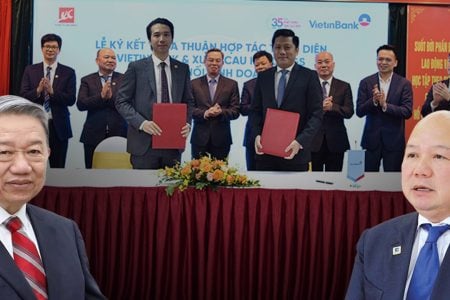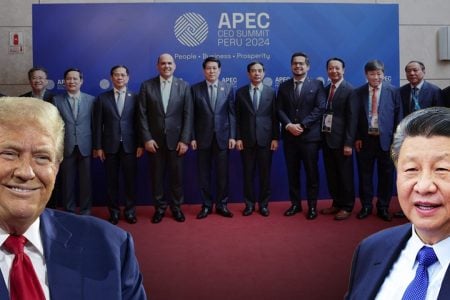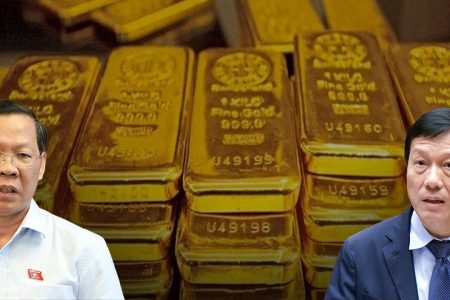
Vietnam is mainly applying two fairly rudimentary waste treatment technologies: burial and incineration to treat about 25 million tons of domestic solid waste annually, of which more than 50% is urban solid waste. However, no form has been recognized to be really effective, even causing more pollution.
Nam Son factory produces electricity from waste, the largest and most modern in Vietnam, about 35 km from Hanoi. It is expected that when it comes into operation in January 2022, it will treat 4,000 tons of waste from the capital city out of a total of about 5,500 tons are delivered daily to Nam Son landfill. „Because the reception of garbage in Nam Son has been overloaded, so in the past time, many times, wastewater from garbage overflows and affects people’s lives,“ according to the statement of Ms. Nguyen Thi Hong. Van, general director of Southeast Asia market development department, Thien Y energy company (China), the investor of Nam Son factory.
According to the People’s Deputies‘ page on May 21, 2021, „the whole country has 1,322 domestic solid waste treatment facilities, including 381 incinerators, 34 composting processing lines, and 904 landfills, of which less than 20% of landfills meet hygienic requirements.” This is a weakness that Vietnam needs to overcome to be able to handle waste effectively.
It is an important first step for people to separate garbage from their households. However, before that, central agencies and levels need to have a synchronous mechanism, from technical (related to garbage collection and treatment) to legal to reduce emissions and encourage reuse and recycling. This is a joint statement with RFI Vietnamese dated November 19, 2021, by two leaders of Gret NGO: Mr. Nguyen Huu Ninh, Gret’s chief representative in Vietnam, the project leader of waste management, and Ms. Tran Thu Huong, Project Manager of the Gret Foundation, staff in charge of training and capacity building of the waste management project.
RFI: Vietnam treats domestic waste in the two most traditional forms: landfilling and incineration. What are the disadvantages of these two forms? And why do these problems arise?
Mr. Nguyen Huu Ninh: In Vietnam, on a national scale, for example, every day, the total volume of domestic waste generated ranges from 60,000 to 65,000 tons, of which about 20-25% is concentrated in two cities Hanoi and Ho Chi Minh City. So, if talking about waste treatment, people often say that Hanoi or Ho Chi Minh City are the localities with outstanding problems, the most pressing problems. But actually, we have to say that the treatment of waste is quite different in urban areas, rural areas, in big cities, or in small urban peri-urban areas.
Regarding waste treatment, in Hanoi and Ho Chi Minh City, landfilling is still the most common method, in which in Hanoi, up to 90% of the waste volume is treated through landfilling and Ho Chi Minh City is about more than 70%.
Regarding landfills, actually, we do not have any specific environmental impact assessment reports to confirm that the landfill work was done in a „safe“ way, „according to the procedure“ and without any problems on the environment or all problems of pollution, such as leachate, gas… all have been treated. In fact, we also did not have access, there were no specific reports that could say that the waste treatment through that form of burial was safe for the environment. So it’s a bit difficult to get such information.
RFI: Inadequacies in landfilling and incineration have been mentioned, but why persist for a long time, until now?
Mr. Nguyen Huu Ninh: In Vietnam about burial, everyone clearly sees the problems posed. Most of the dumps are overcrowded and have an impact on the environment, causing conflicts with the communities living around there, for example, we already have a lot of information.
Regarding the treatment technology in the form of incineration, for example, why is it not popular in Vietnam? I think there are many reasons, both subjective and objective. Objectively, the feature in Vietnam is that in the waste there is too much unsorted organic waste. As part of a Gret project, we also conducted a waste composition analysis, where between 55% and 60% was organic waste.
The second factor is that the humidity of the garbage is very high, depending on the season, but also ranges from 50-60%. Therefore, if the waste is not classified and not treated before being put into the incinerator, the incineration will not be thorough and will require more complex technologies to be able to completely handle the pollution problem.
If the incinerator is small-scale, manual, or with little investment, it will not be treated as thoroughly as expected. The reason is that the water content of the waste is too high, which leads to the temperature in the incinerator being too low and leads to a lot of untreated harmful emissions and does not meet the standards.
One of the other reasons is that in Vietnam, the criteria set is to apply new technologies that not only require additional energy but must also generate energy and meet a series of input criteria. As a technology that must handle the problem of waste without sorting, there are many technical and institutional barriers.
Of course, another subjective aspect is the people’s consciousness, the community’s sense of waste classification, or „3R“ which means the need to reduce emissions, increase recycling, reuse, and segregate kind… All those points are related to the sense of community.
RFI: The Gret Foundation has been heavily involved in improving waste disposal practices. So what are the consequences for the environment if waste is not handled properly? Which direction should be followed to manage waste effectively and profitably?
Mr. Nguyen Huu Ninh: Actually we still say that sorting waste at source is one of the key points for successful waste treatment. In Vietnam, there are also many government projects, supported by international organizations to pilot waste separation at the source. Sadly, up to now, no project has really been successful. Therefore, it is true that the waste classification must be done synchronously, from the stage of collection and transportation to the stage of treatment infrastructure and also the output stage for recycled products.
It is not enough just to talk about the people’s awareness and understanding of garbage classification, or the equipment of the team to collect and transport it, but it must be a whole system of infrastructure equipment. The first is that the people must have enough equipment to be able to separate waste at the source (at home), then the collection team must also have specific equipment for different types of garbage and go to the processing facility.
In addition, there must be sanctions and applicable policies, and there must be unit prices applied to each different form of treatment. Currently, the government still only has the two most popular forms of burial or incineration and there are two unit prices for those two forms. However, other forms of treatment, recycling, or making organic fertilizers do not have unit prices. And behind that is a process to monitor whether the businesses or the units responsible for waste treatment apply the correct treatment methods as committed.
Perhaps the failure of the garbage sorting projects at the source is the failure to create an asynchronous process.
RFI: What is the role of people’s awareness of waste disposal at source?
Ms. Tran Thu Huong: Actually, the part related to people’s consciousness is still only the lower part, but also related to the priorities of managers in their policymaking. Currently, the problem of waste management is still included in environmental issues, while the environment has many different problems, but waste is just a problem and really has not been a priority.
When we did the project in Vinh Phuc, waste was still not a priority for them until the project worked with the consulting units and agencies to issue policies on waste treatment accompanying us in field activities. And it seems that their priorities in programs, in their proposals in terms of the policy have also increased.
Mr. Nguyen Huu Ninh: Recently the government issued a new law orienting who is the emitter, that person must be responsible. Units that use plastic goods and plastic bottles have to pay to treat those plastic waste, for example. However, the work of advocacy and propaganda for the people or specific instructions for the authorities or businesses to apply and use may still need time.
Ms. Tran Thu Huong: Another direction Vietnam is starting to explore is promoting the circular economy, still reducing waste right from the production stage, and how to recover waste back in the production process. Instead of only relating to consumers, it is now necessary to bind the responsibility of manufacturers as well. This is a direction, but it is still in the testing phase.
RFI: Back to Gret’s project, how is the waste treatment project in Vinh Phuc province implemented by Gret? How is Vinh Phuc province different from large urban areas?
Ms. Tran Thu Huong: The project in Vinh Phuc province has been completed. The project was implemented in 25 communes in 2 districts from 2016 to 2018 and was handed over to the province in early 2019. The project has many different components, in which the component related to infrastructure is very small. The project mainly focuses on engineering, capacity building, communication, and policy advocacy. There are a number of products that the province is clearly still working on, for example, updating policies related to waste management, building a database. Products supporting the province’s management are still used by the province.
Mr. Nguyen Huu Ninh: First, we have to explain a bit about the context of the project. The intervention project is located in Vinh Phuc province, which is a semi-urban area (half-rural, half-urban), unlike big cities like Hanoi and Ho Chi Minh City where the collection and treatment works of waste management are carried out in a concentrated manner by large enterprises or at the city-wide scale in centralized landfills, applying science and technology.
Currently, in rural areas, waste is treated at the commune level, not at the provincial or district level. For example, Vinh Phuc province has 7 districts, 1 town, 1 city, out of 7 districts there are 118 communes and each commune is a private unit responsible for the collection, transportation, and treatment of waste and they must have a private landfill and incinerator. In Vinh Phuc province where Gret is implementing the project, we assessed that each commune has 2.5 landfills or incinerators.
Gret’s project focuses on 3 main contents: support to renovate some waste treatment infrastructure (landfills, existing incinerators) to minimize harmful impacts on the environment. Gret’s project is not to build a new one and hand it over to the province, but to help improve existing infrastructure, introduce some new technologies and techniques to help businesses and cooperatives operate and maintain repair, maintenance, and management to minimize the impact on the environment.
RFI Vietnamese would like to thank Mr. Nguyen Huu Ninh and Ms. Tran Thu Huong, of the NGO Gret, in Hanoi.
Thoibao.de (Translated)























